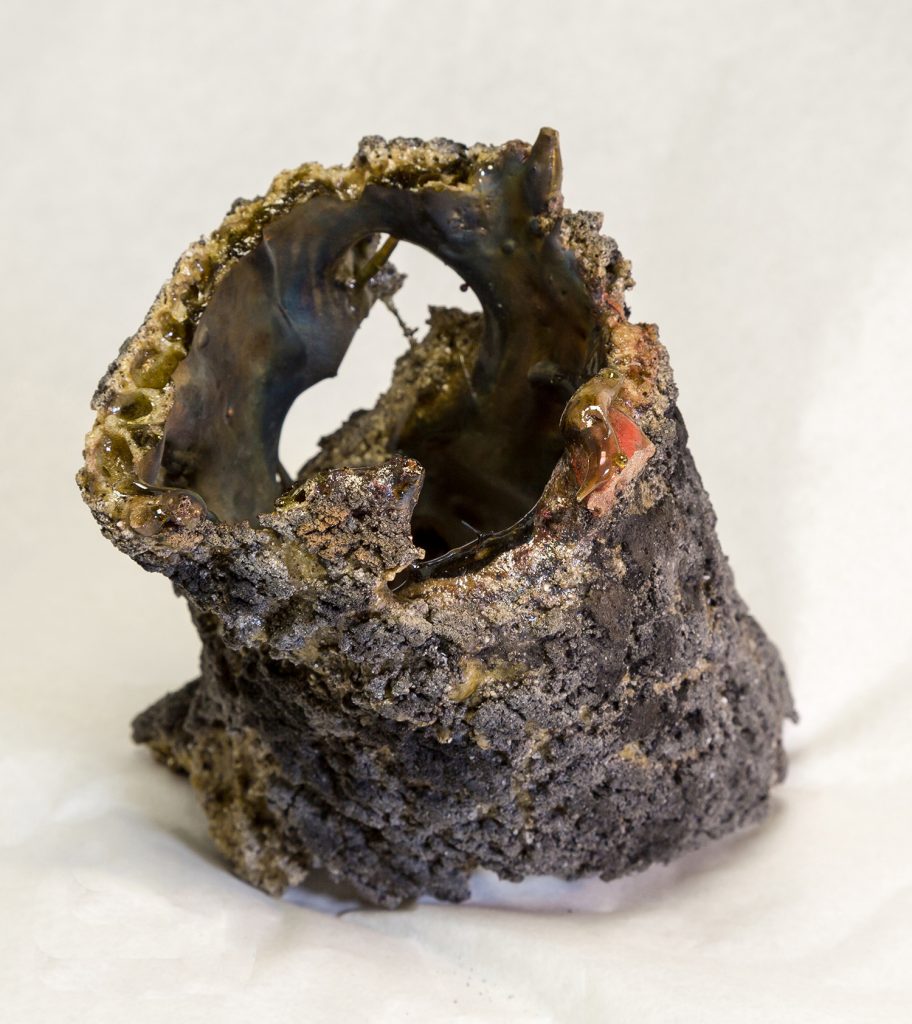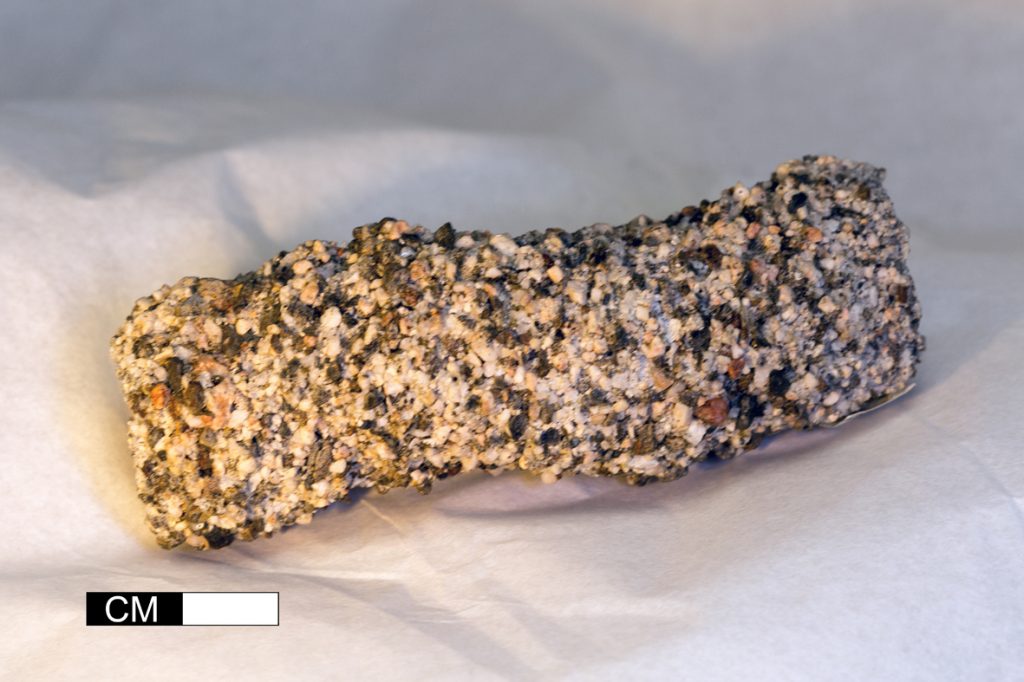There are many curious objects in the vast collections of National Museums Scotland that are only known to their caring curators, and the Earth System collection has its fair share of these natural wonders. Many are worth examining to elicit their story and I was recently shown an object that I’d never encountered in my long geological career.
Originally described as a “melted mole-hole”, the specimen consists of a series of earthy tubes and side shoots about 75 mm (3″) in diameter, with a bread crust exterior and a dark glassy interior. The dark “vitreous” interior varied from 10-15 mm in thickness and was extensively bubbled. However, I did recognise it as a possible “fulgurite”, which is the product of a lightning strike on the ground.

In the case of a lightning strike, a massively high voltage bolt hits the earth and melts damp soil or sand into a tube. The tube usually has a very thin wall, only a few sand grains thick, with a very thin internal coating of clear glass. The “melted mole-hole” by comparison was much thicker than would have been expected and required a different explanation.
Enlightenment came from the curator who originally showed me the specimen, and I learnt that it could have been caused by the failure of a local, relatively high voltage mains power cable; site photographs show overhead electric cables near where it was found. It seems that this live cable failed to earth and remained active long enough to melt a large tube in the soil: our “melted mole-hole”. Although lightning has a very high voltage, its very short strike time imparts only a small amount of power into the ground. The relatively lower voltage, but higher amperage and longer active time of a failed electric cable, means that it can transmit a huge amount of energy into the ground, hence our man-made fulgurite.

Fossilised lightning strikes in the form of fulgurites are known throughout geological time and can be seen in 250 million-year-old sandstones on the island of Arran, where they form thin, raised tubes. Indeed, lightning has been striking the surface of Earth for at least 4.5 billion years and is also known to occur on the planet Jupiter. The electrical discharges in the early, primitive atmosphere of Earth, rich in gases such as methane, ammonia, carbon dioxide and water, are thought to have produced amino acids, the basic building blocks of life. So, the next time you see a flash of lightning, be inspired!
